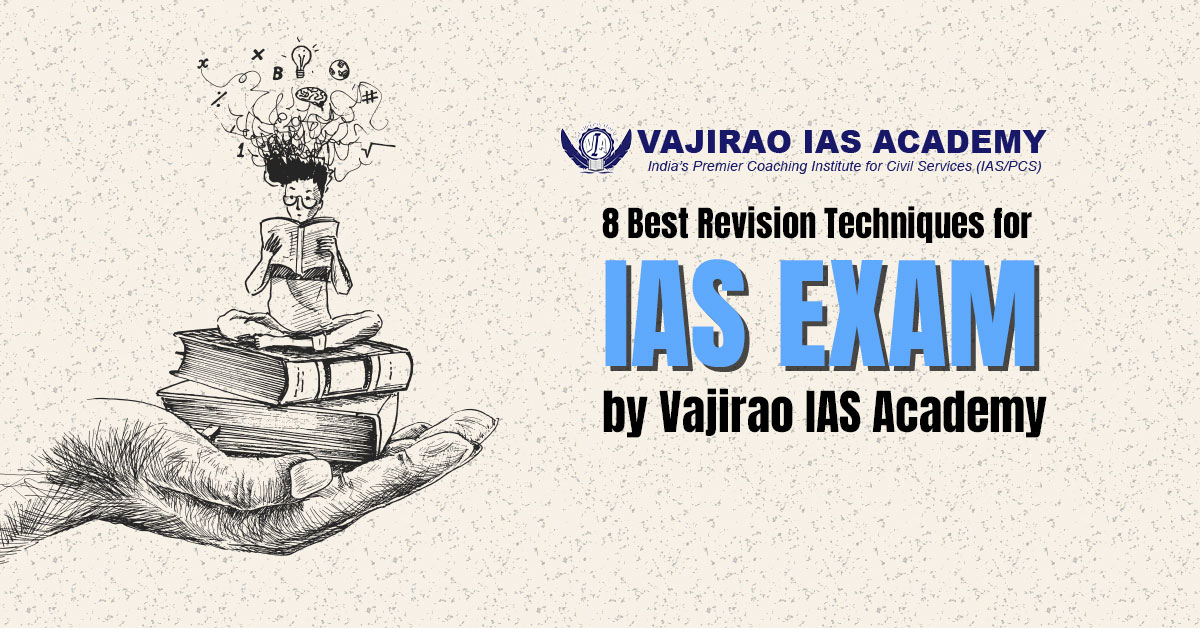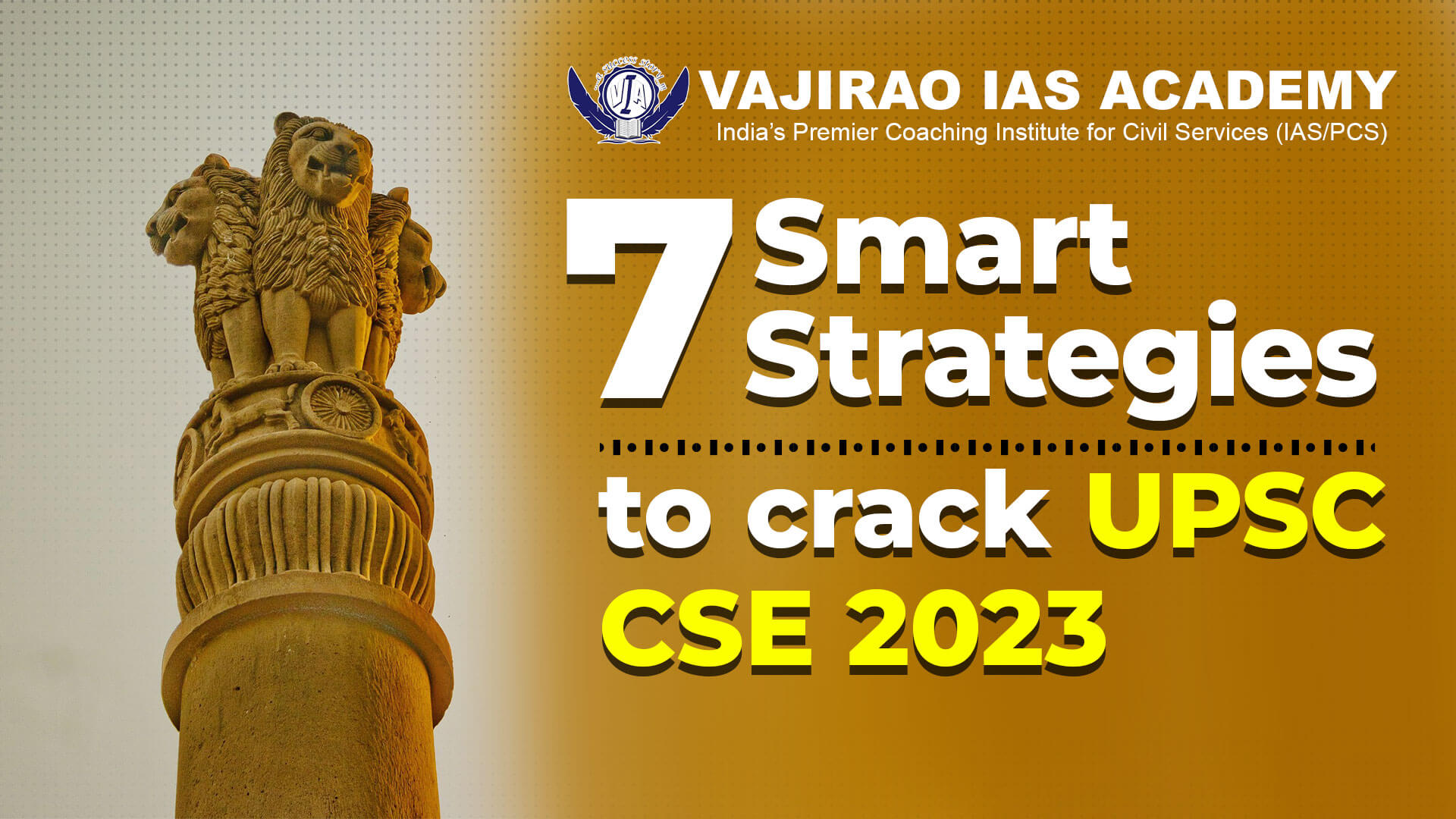Revising for a competitive exam such as the UPSC can be daunting, but with the right tips and tricks, you can feel more confident in your preparation. Vajirao IAS Academy, India’s best IAS Coaching Centre in Delhi, has come up with the 8 best revision techniques for UPSC Exam.
Technique 1: Time Management
The first technique to successfully revise for the IAS exam is time management. The IAS syllabus is vast, and it can be overwhelming to cover all the topics in a limited amount of time. Therefore, it is crucial to allocate your time effectively. Make a study plan that includes all the subjects and topics you need to cover before the exam. Prioritize the topics according to their weightage in the exam, and allocate more time for them.
Another essential aspect of time management is taking regular breaks while studying. Continuous studying can lead to burnout, which can significantly affect your productivity levels. Take short breaks every two hours and use this time to relax, refresh yourself or engage in an activity that rejuvenates you.
Lastly, avoid procrastination as much as possible. It’s easy to get distracted by social media or other things while you’re supposed to study; however, remember that every minute counts when preparing for such a competitive exam. Stay focused on your goals and deadlines and make sure you stick with your plan strictly without any deviations or distractions along the way!
Technique 2: Making Notes
Note-taking is an effective technique for revising and preparing for the IAS exam. It helps to retain information by allowing you to organize your thoughts and ideas in a structured manner. The first step in note-taking is to identify the most important concepts, facts or ideas from the text or lecture or classes from the best civil services coaching institutes in Delhi. Use abbreviations, symbols and colors to highlight key points, which will make it easier to recall them later.
Another useful tip when making notes is to use diagrams, flowcharts or mind maps, especially when understanding complex concepts. Not only do they help visualize ideas better but also can be more memorable than just text alone. Additionally, try summarizing lengthy paragraphs into a few bullet points rather than copying everything down verbatim – this way you’ll focus on key details while saving time.
Finally, review your notes regularly; ideally within 24 hours of creating them so that the information stays fresh in your memory. By taking regular breaks between revision sessions and using note-making techniques effectively, you’ll feel more confident come exam day!
Technique 3: Taking Breaks
Taking breaks is an essential technique to keep your mind fresh and active during the revision period. It is crucial to take regular breaks to avoid burnout and maintain productivity levels. Taking short, refreshing breaks can help you regain focus and concentration, allowing you to continue studying for longer periods.
During your break time, it’s important to disconnect from any distractions such as social media or phone notifications. Instead, opt for activities that help you relax and rejuvenate like taking a walk in nature or listening to calming music. This will help clear your mind and ensure that you are fully recharged for the next study session.
Incorporating a break schedule into your overall study plan will not only improve your revision techniques but also enhance your overall health and well-being. Remember that taking care of yourself both physically and mentally is essential in achieving success in the IAS exam.
Technique 4: Using Mind Mapping
Using mind mapping is another effective revision technique that can help IAS exam aspirants to learn and retain information better. Mind mapping involves creating a visual representation of the information being studied, using keywords and phrases to link related ideas. This technique helps in organizing information and making it easier to remember during the exam.
To create a mind map, start with a central idea or concept and branch out from there, adding related subtopics as they come to mind. Each subtopic can then be further broken down into smaller details using additional branches. The process continues until all relevant information has been included in the map.
UPSC Mind maps can be created by hand or using online tools like MindMeister or Coggle. They are particularly useful for subjects that involve complex concepts such as history, geography, economics, and political science. By visually connecting related ideas through a structured framework, students are able to see the big picture of a topic while also understanding its finer details.
Technique 5: Adapting to Your Learning Style
Adapting to your learning style is a crucial factor in any exam preparation, especially for the IAS exam. Different individuals have different learning styles, such as visual, auditory or kinesthetic. Therefore, it’s essential to identify and adapt to your learning style while preparing for the IAS exam.
Visual learners can benefit from using mind maps and diagrams to understand complex topics easily. They can also use flashcards or pictures to remember information effectively. Auditory learners should focus on listening to lectures and speeches related to their syllabus as they tend to learn better through sound than text or images.
Kinesthetic learners learn best by doing things practically; hence mock tests and solving previous year question papers can help them prepare for the IAS exam more efficiently. Adapting one’s learning style helps in retaining information better, improving performance, and reducing stress levels during exams.
Technique 6: Understanding the Exam Syllabus
Before starting the revision, it is essential to have a clear understanding of the IAS exam syllabus. The IAS exam comprises three stages – Prelims, Mains, and Interview. Each stage has its own set of subjects and topics that need to be covered. It is crucial to have a detailed understanding of the syllabus so that you can plan your revision accordingly.
Technique 7: Regular Revision
The first and most crucial technique for effective revision is regular revision. It is essential to revise the topics regularly, especially the ones that you find difficult. Regular revision helps in reinforcing the concepts and also improves retention. Vajirao IAS Academy recommends revising the topics and the class notes of the best UPSC Coaching Centers in Delhi at least twice a week.
Technique 8: Practice Previous Year Question Papers
One of the best ways to prepare for the IAS exam is by practicing previous year question papers. Practicing previous year question papers not only helps in understanding the exam pattern but also helps in identifying the important topics and areas where you need to focus more. Vajirao IAS Academy suggests practicing at least five years of previous year question papers before the exam.
Conclusion: Implement & Succeed
In conclusion, it is important to implement the techniques discussed above in order to succeed in the IAS exam. Simply reading and understanding the material is not enough; consistent revision is key. The best way to ensure that you are retaining information is by actively engaging with it through practice questions, flashcards, and summaries.
Furthermore, it is crucial to develop a revision schedule that works for you and stick to it. This will help avoid cramming sessions right before the exam and reduce stress levels during the preparation process. Additionally, do not hesitate to seek help or guidance from mentors or peers if needed.
Overall, success in the IAS exam requires discipline, commitment, and a strategic approach towards revision. By implementing these techniques consistently and effectively, you can increase your chances of achieving your goals and fulfilling your aspirations as a civil servant.




